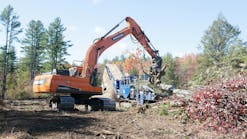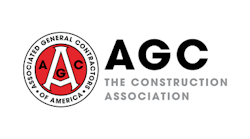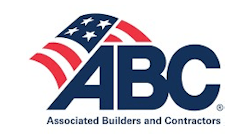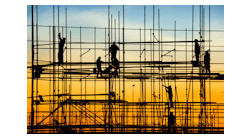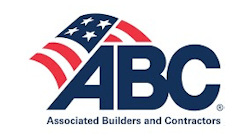Through his invention of the light bulb, Edison changed the world with a safer, brighter illumination. But it wasn’t long before incandescents—tungsten filament and gas-filled bulbs—surpassed the fragile carbons as the growing number of automobiles demanded better roads and better outdoor street lighting.
In the 1920s, German innovators discovered how to convert invisible ultraviolet wavelength into bright white light using phosphorous, launching the popular fluorescent bulb, a perfect outdoor illumination. But while cheaper and brighter, the fluorescents had drawbacks. They broke easily and their light was harsh and non-directional—undesirable attributes that kept inventors busy finding new sources of bright, outdoor lighting for roads, outdoor work, sports, and public spaces.
From the 1960s on, creating a bulb with pleasant wavelength color, longer durability, and lower cost has been the focus of lighting innovators. From mercury vapor to metal halide, high-pressure sodium, and compact fluorescents, the lowly bulb has changed shape, temperature, light quality, efficiency, and longevity.
Now, in the 21st century, bulbs have evolved from sealed, gas-filled glass containers and glowing filaments to light that isn’t even a bulb at all. Light-emitting diode (LED) is the clever technology that uses semiconductors that react when exposed to electric current and emit visible light. When the diodes are connected in groups, the aggregate light is very white, very bright, and uniquely directional.
Whether they’re on a busy highway or a remote pipeline, outdoor contractors and crews working at night rely on bright, safe illumination to get the job done on time and on budget. Outdoor light towers have come a long way in the last few decades with new streamlined compact designs, efficient electric- and diesel-powered units, and safer, longer-lasting light sources.
Light from the Genie in a Bottle
Global manufacturer Terex offers a broad range of lifting and material-processing solutions, and their Genie line of aerial lift equipment gets workers up to where they need to be. Originally founded in 1966, the Genie name was born when innovator Bud Bushnell bought the manufacturing right to a material lift that operated on compressed air. This impressed customers with its “genie in a bottle” so much so that the name stuck and became official. In 2002, Genie was acquired by Terex, which continues to sell the Genie line under that name through widespread distributor networks.
Genie product manager Marie Engstrom says that the Genie line includes compact standard-duty light towers, compact heavy-duty light towers, and industrial heavy-duty light towers.
“When selecting a light tower, users should consider the key features of the unit,” she says. “Importantly, this includes run time, since the longer a unit runs, the less frequently a worker needs to go out and refill the unit—which saves money.”
For example, Engstrom cites the Terex RL4 Light Tower, which runs for up to 90 hours on one tank of fuel. This particular model has an extended (23-foot) height of floodlight, providing 4,000 W of light in a 359 continuous tower rotation, which she says allows versatile and pinpoint light positioning. And, its compact size maximizes freight dollars, as up to 17 units can be transported on one truck.
She adds that the trend in overall design is changing.
“Light towers are migrating from a laydown mast, which stows over the cabinet, to having a vertical mast, which stays upright. The vertical mast makes the overall envelope of the unit smaller and simplifies setup,” says Engstrom.
“Another benefit to the smaller footprint is that a vertical mast means more units can fit on a truck. Also, another feature to look for is a quick-setup vertical mast because it is efficient to use and incorporates a mast brake as a standard feature to protect the user in the unlikely event of cable failure.”
Choosing the right tower depends on several factors, and while Engstrom says “getting the right unit for the job is a good starting point,” other considerations beyond illuminating the area of work are important.
“Many different models have similar amounts of light output between them while offering additional benefits for use in different applications and environments.
“For example, the Terex RL4 and the AL5 (compact heavy duty) have similar 4,000-W light configurations. The RL4 focuses on value for the user with its 90 hours of run time on one tank of fuel, its compact size, and efficient vertical mast set-up. The AL5 has a heavy-duty chassis suitable for towing on rough roads, and cabinet storage for lights to ensure both security and protection of equipment from damage.”
With more galvanized features adding to its durability, the AL5 is built for the most demanding job sites: construction, mining, and oil field applications. Its 30-foot extended floodlight has a hydraulic articulating tower that can handle up to 8,000 W of light.
The genie in these lights isn’t really magic, but the range of size, flexibility, efficiency, and product durability ensure proper illumination and job safety to get the job done on time.
Fighting the Dark Shadows
“Our charge has been to take that bright work light that’s giving workers eye strain from fighting glare and dark shadows, and offer a better solution,” says Bruce Coleman, product manager at Multiquip, a manufacturer of construction equipment, power generators, and distribution in more than 70 countries worldwide.
“We saw the problems with current light towers as both slowing up work as people were fighting the glare from brightness, and the safety issues this creates. The shadows cast by bright light create a real problem when you are trying to see more than one place at the same time and you have to constantly be moving lighting, or you are unable to see because the illumination over angles of equipment or terrain creates severe shadows and obscures potential hazards. When you can’t see, accidents happen.”
Coleman says that a more diffused light has multiple applications and is highly desirable for social events such as outdoor parties and weddings, and award ceremonies. It’s unlikely that those users would suffer anything more serious than a dropped champagne glass, but workers on a drilling rig or road crew must be able to see to do their work and avert accidents caused by poor illumination.
The Multiquip innovation, called the GloBug, is a diffuse lighting that looks not unlike a floating UFO when shown against a dark sky, and helps solve critical outdoor lighting issues. Coleman cites the many benefits of this new design that provides a wide circumference of safe diffuse lighting. The diffusion comes from the Multiquip diffuse balloon bag “which shrouds the tower’s LED units and helps you negotiate the brilliance of the lights on the area you are working.” The balloon bag attaches easily to the mast T-bar in place of two conventional lamps to dramatically reduce glare in the work area, eliminate shadows, and improve safety.
“Our GB43LED model represents the most compact, efficient, and photometrically near-perfect solutions for lighting needs in construction, first response, and special events. By using LED lamps in a series of four units on a mast, users of this GloBug unit can project a clean, bright light in a virtual circle. In other words, a 360-degree radiance that has a 20-foot candle brightness at 30 feet away from its source in every direction. And in fact, at more than a hundred feet, there is still measurable light.”
With four 300-W LED lamps, the total output is 152,000 lumens. For comparison, a 100-W LED household unit delivers about 1,600 lumens. Coleman says users can choose this system by adapting the balloon bag to towable light tower systems, or select a Multiquip two- or three-stage mast pentapod free-standing unit.
The company also offers light towers with metal halide bulbs, and while these are more affordable, “These bulbs are more yellowish in spectrum and they have a lower lumen output. The other disadvantage is once they are off, or if a bulb fails, for safety reasons you have to wait for 15 minutes for the unit to cool down before you can reignite the tower.”
For projects that won’t require a lot of extended use, these towable units operated by diesel-driven generators are a good solution. Many customers, however, “are willing to spend extra to get the 50,000 hours out of an LED and switch out the metal halides for LED’s,” says Coleman.
“These not only have a better spectrum of light, if one does fail, they are not bulbs—more like a battery of solid state chips. So you can replace one and turn the unit right back on.”
Government agencies are realizing the relationship between lighting and construction safety, says Coleman.
“Some agencies like OSHA, the National Highway Safety Administration, and Federal Highway Administration can dictate lighting applications in terms of foot candles of light at certain distances in a working area. But we can tell them ‘here’s what you can anticipate under our GloBug versus a projection tower that will give the footcandles, but not a lot of glare.’”
He explains that working under a safety banner of diffuse light makes their product easier on the eyes. The workers have no shadows to fight, so there is less worker fatigue incurred from the constant vision changes from dark to light. Plus, it’s safer for oncoming vehicles.
“With the LED GloBugs, you also have dimmer switches; so you can dim them, but you don’t negate the properties. The other benefit is these light sources use less power and represent a lower amp draw, so you can use smaller generators, which mean less money to do the job when compared to using a metal halide tower unit. If you are using a tower for security, you need bright light seen from far away. Or if you need a bright directional light in a disaster like a hurricane, the metal halides do a good job. When there are other considerations, the GloBug LED towers are
a great choice,” affirms Coleman.
In Boise, Idaho, operators and users voted the GloBug number one for safety. He cites a situation where their LED hand-held units solved a lighting conundrum:
“A guy called and he had this unique job where he had to go inside and inspect the welds of tanks that hold fluid. Since he had to walk in and check the integrity of the welds, he couldn’t take a huge unit—plus he needed a durable, long lasting, very bright light. Unlike bulbs, LEDs are weather- and impact-resistant and cooler than bulbs, so our portable hand-held was the perfect answer.
“LED towers are also great for places like mining—where you don’t want diesel-spitting light towers that are a possible source of a potential ignition,” he adds.
“One thing we know for sure is that construction and the American worker is evolving toward modern and cheaper practices. So we know going greener and safer is a growing trend that we are ready to meet.”
Airstar balloon lighting
A Long History on the Job
The name has changed, but the product is the same, says Deree Bivins, lighting systems product marketing manager at Doosan Portable Power. Doosan’s lighting systems began as Ingersoll Rand, a renowned brand with 125 years in manufacturing that launched the first portable, water-cooled compressor in 1902.
“We have more than a century of manufacturing expertise and the Doosan Portable Power line includes mobile generators, compressors, lighting, and light compaction equipment. In 2007, the Korean-based Doosan company acquired the Ingersoll Rand Utility Equipment interest, Bobcat and Attachments; this subsequently launched Doosan Infracore Portable Power.”
The name may be different, but the manufacturing history, market reputation, and dedication to quality and innovation continue to serve industries that rely on portable power for diverse construction needs, says Bivins.
“Of course, the reason light towers are used is job site safety—allowing workers to see properly and do work correctly,” states Bivins, adding that the latest move toward LEDs is a combination of saving money and going green.
She says the Doosan portable lighting units offer users a line of six different models that serve the lighting needs of special event, road and general construction, emergency and disaster, and oil and gas markets.
Their versatile BL2000 balloon light is a compact and very portable lightweight unit (18 pounds) that can plug into any 12-volt, 20-amp receptacle, and deliver 2,000 W of glare-free light over 15,000-square-feet.
A Doosan portable light unit brightens a work space.
“This kind of glare-free light is a terrific innovation and allows for a safer workplace. There’s reduced worker fatigue in an environment that has fewer reflections and shadows, and this makes work less stressful. Plus, our LED light source is long-running and uses far less power.”
Another innovation Bivins describes is the newly redesigned LSC Light Tower. It comes fully assembled and its compact footprint allows for 12 fully assembled units to be transported to a job, ‘ready to go,’ on one 48-foot flatbed. The current trend in lighting is moving away from the lay-down mast on towable units to a vertical mast perpendicular to the axle, says Bivins.
“This saves money in transportation and setup time, which makes it perfect for emergency and disaster relief, and also for road and bridge construction.”
The unit can extend up to 30 feet in height and has four lighting receptacles for the 1,000-W metal halide lights, powered by a diesel generator.
“If you put in a full tank of fuel, all of our diesel-powered towers will run these metal halides about 52 to 55 hours. However, if you opt for the LED light source, you can use half as much fuel, and it takes about a quarter of the wattage to power them up.”
For more demanding scenarios such as remote mining operations, which are often in harsh climates where there is no reliable power source, the L20 vertical light tower can help workers get the job done. This unit has four fan-cooled (as opposed to water-cooled) light receptacles with individual circuit-breaker protection that can run for 133 hours powered by diesel fuel. Since it offers extra power, “It’s perfect to also run heaters, power tools, or meet other mechanical power needs on a job site,” says Bivins. And she adds that the 25-foot tower can withstand winds of more than 65 miles per hour.
“All of our Doosan towers are available through one of our network dealers, and we make everything right here in Statesville, North Carolina. We don’t usually have direct contact with the end users, but one thing we do offer to help customers is sales training for our dealers,” explains Bivins.
A Multiquip balloon unit mounted on a paver
“Our product managers do sales training twice a year here in the corporate office. So, if one of our dealers has a new salesperson, they can attend these sessions to help familiarize them with the line—go through its features and benefits. Occasionally, however, unusual things come up, and we need a product manager to go out to a site and help solve a special need or unusual situation.
“It’s always rewarding to be in a collaborative process to help out.”
An Oscar-Winning Performance
Each year, Best Actor, Best Director, and Best Costumes all take center stage when the coveted golden statuettes are awarded. But the real winner is often an unsung, yet essential hero to all of the other “bests”—and that winner is in the category of lighting. If there’s no light, all the efforts of actors, directors, and set dressers suffer. And the same can be said for road crews, drilling operators, and construction staff, who, along with a film crew, share the common need to see what they are doing to make their work easier.
According to Brett Yuhas, spokesperson for the construction division of Airstar America, their non-glare balloon light towers made Johnny Depp and his pirates and Leonardo DiCaprio and the sinking ship look so good that Airstar was awarded Hollywood’s golden award twice for Lighting on Pirates of the Caribbean and Titanic.
Night work using a Multiquip balloon tower
Referencing the film work, he says, “Our magnetic ballast lighting is one of our products in our line-up of outdoor lighting products that gives even, non-flicker light, which is essential for film production. After 19 years, we have a superb track record and are now the most well-known, non-glare globe outdoor lighting system. While we don’t make the towers themselves, but partner with a manufacturer (Allmand) who does, we do manufacture the balloon globe units here in the US, in Orlando, Florida.”
“Our company motto, ‘we turn nighttime into daytime,’ really says it all because our bright, non-glare lighting takes 360 degrees of dark and brightens it with a diffuse, wide footprint of light. Workers need to have a well-lit area where they are not fighting dark corners and experiencing fatigue going from a blindingly bright area into a dark area.”
An analogy for the mentioned transition is something like going from a well-lit hallway into a dark room, then back into the hallway, for hours on end. Yuhas says this constant visual adjustment causes fatigue to people working in that kind of environment.
“We know that most accidents that occur with road crews happen right before dawn after a night of this kind of work.”
Yuhas explains that their lighting units can come in a variety of configurations, but typically include four 1,000-W LED units that produce up to 20,000-square-feet of light in a 360-degree footprint.
The lights on the top of the tower are enclosed in a balloon-style bag that Yuhas describes as similar to a woven sailcloth material containing Kevlar fibers. This bag is then stretched over a metal frame surrounding the lighting units. Their fabrication of this specific material allows for a bright white light to be emitted from the balloon.
“We can keep the balloon from overheating with fans that are inside the light tower. First, the fan blows up the fabric covering to its operational circumference over the frame, and then it keeps running to dissipate heat generated by the light source so they don’t overproduce.”
He adds that on the big towers, the frame is an aluminum rod system that can handle winds of up to 75 miles per hour, “but out on a fracking site, for example, where there can be a lot of wind, the crew usually shuts everything down once winds reach 45 miles per hour, and they crank down the lights at that point.”
On highway construction, the system benefits road crews and drivers since oncoming traffic is not blinded by piercing, directional tower lights. Yuhas says drivers that have looked directly at those lights while passing through a work zone can experience temporary retinal white spots in their vision as they re-enter the darkened roads.
“This is dangerous for drivers. But with balloon lighting, you don’t have that problem. It’s safer for workers and for drivers.”
And Airstar safety has been recognized by FEMA, says Yuhas.
“Our lighting is on the FEMA cache list and recognized as an optimum system for base camp lighting in a disaster. And we are also the only balloon-light manufacturer to have been awarded a safety certification from the Federal Highway Administration crash-test initiative.”
What this means, he explains, is that their units have been crash-tested at both 5 miles per hour and 50 miles per hour for impact-crash episodes.
“The FHA is now requiring everything that is on a road crew to be crash-tested. Our lights were crash-tested for flaggers, so if someone hits a sign, barrier—or in this case, a light tower at night—it has to be fabricated to break apart and not go through windshields; or act as a perforator to floor boards if you run over it; or come down and bend the roof more than an inch. Basically, none of the tower components involved in a crash should act as a projectile and penetrate the vehicle. Nine months ago, our towers were tested, and they passed the crash-test safety requirements, so we were very proud of that achievement.”
While the Airstar light system has seen action in diverse venues, including 9/11 Ground Zero, Katrina disaster areas, and film location sites—to name a few—Yuhas says a whole new arena is opening up for them in the agricultural sector.
“I recently learned that for every hour blackberry and blueberry crops stay in a field with temperatures above 80 degrees, they lose one day of shelf life. Picking these at night is essential, but you have to see what you are doing. And when working close to the ground, the pickers need good, bright light without glare and few shadows.”
He says growers are now harvesting at night with a tractor-mounted Airstar light system that is helping vineyards, lettuce growers, and fruit and vegetable farmers get their crops out of the heat and into refrigeration for processing—saving them money and ensuring stable, fresh quality of their commodities.
The expanding trend toward non-glare continues to grow in all industry sectors requiring outdoor lighting, and Yuhas reports customer enthusiasm.
“People say it’s so much better for them. And after they’ve seen it on other projects, and we do a demo for them, they tell us it’s so much nicer to work with when compared to other lights.”
The birth of semiconductors in California’s Silicon Valley is widely known; but it’s easy to confuse silicon and semiconductor—different words, but uniquely interchangeable.
We are all familiar with silicon (atomic weight 14 on the periodic table) because our beaches are full of it; sand is noncrystallized silica. Yet, with conductive properties that are neither fish nor fowl, it’s neither a metal (and a true conductor of electricity), nor a non-metal like rubber, which is an insulator. Science has classified it as a metalloid and its properties are described as being that of a semiconductor.
As a metalloid, it will conduct electricity, but only if you tweak it with some other stuff like arsenic or phosphorous to aggravate its perfect molecular structure from inert to active.
Then, when you attach two wire leads to the semiconductor, it becomes a diode. Give those wires a jolt of electric current, and the photons on the semiconductor react, become activated energy, and give off light. Hence the name light emitting diode.
Early LEDs were the red ones and novelty of the early pocket calculators. These led to the invention of blue diodes that created white light LED. Today, adding different alloys to semiconductors creates red, orange, yellow, blue, green, or white emitted light.
Just some fascinating details to share with friends and family when the dinner chat gets boring!






